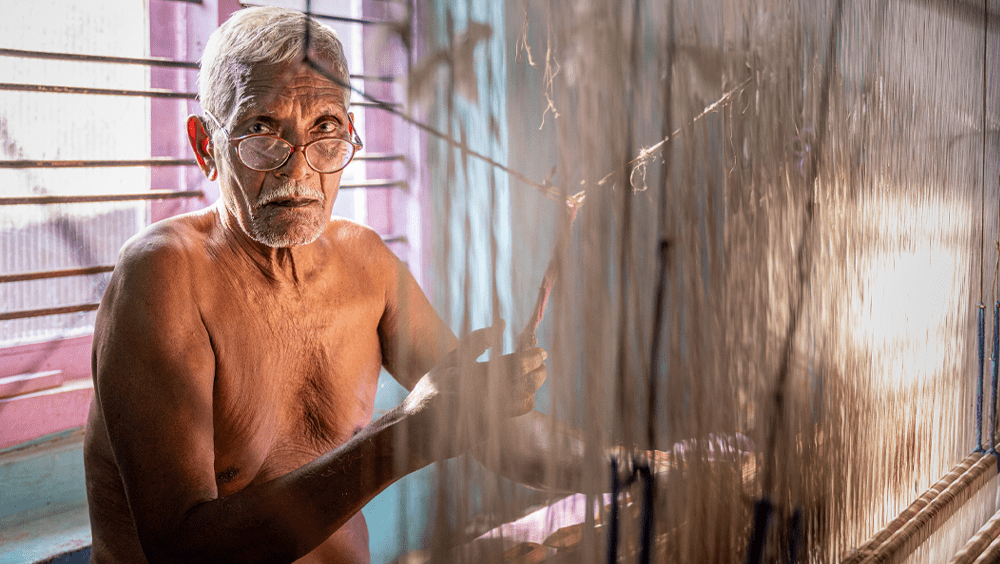
The Indian handloom industry is the oldest and largest industry in the world, with a history of thousands of years. Handloom production is now the country’s second largest job-creating sector after agriculture, employing more than 65 lakh people. However, despite outstanding craftsmanship that demonstrates the Indian culture, the industry faces several issues. While the Indian government is constantly working to improve productivity and marketing in the sector, weavers continue to face a crisis. Poorly implemented protection policies, and easy availability of power loom products, have contributed to the slow demise of the handloom sector.
Some of the specific challenges confronted by the Indian handloom sector are as follows:
Difficulty in Obtaining Raw Materials
Obtaining raw materials such as yarn and dye has become difficult. Weavers in rural areas must travel long distances to get these raw materials. Moreover, yarn prices are consistently rising. As a result, yarn for poor weavers is always in short supply.
Unmet Credit Needs
Credit facilities for weavers’ are frequently inadequate. Financial institutions/banks are reluctant to support weavers, and the procedures for obtaining loans are often time-consuming and complex.
Increased Growth of Power looms
The powerloom industries receive subsidies in various forms, resulting in unfair competition. In addition, by misrepresenting their products as handloom, powerlooms have harmed the handloom market.
Infrastructure Facilities
Poor infrastructure facilities characterize the handloom sector. For example, many handloom clusters lack access to water and electricity. Therefore, there is a need to look at the availability of raw materials, ways to preserve traditional knowledge, improve skill sets and production techniques to improve the production process in the handloom sector.
Enhancement in Design
Young people prefer the handloom industry to improve its design to match their tastes and preferences. Most people believe that the weaver’s unwillingness to change is the root cause of the lack of change. On the other hand, the investor is unlikely to accept a risk and does not support weavers to innovate their designs.
Limited Marketing Strategies
Marketing is crucial because it helps carefully advertise the products and services to a targeted audience. Unfortunately, people are less familiar with handloom products since the industry lacks strong marketing tactics. Although the market network should be enlarged, government-sponsored exhibitions are insufficient.
Impact of COVID-19
The sector has seen a sudden hold-up in orders as retailers are closed due to the global lockdown following COVID-19. Craft productions are planned far in advance due to the typical lead time required to complete the production process, 2 to 3 months. On a positive note, signs of revival are now visible as the economy and society are slowly coming out of the shadow of COVID.
Problems must be recognized, and weaknesses and strengths must be assessed for the industry to be fruitful.
Graamyam is a delicate venture to encourage handloom brands in India, particularly Kerala. We are the leading e-commerce platform that offers the best Authentic Handloom Products Online in Kerala, India. Over the years, we have created a network of handloom weavers, encouraging them to develop products that match the taste and preferences of young clientele. We ensure them to market and encourage them to adapt and reinvent themselves.
We gladly accept all individuals who want to lend a helping hand to handloom weavers and support eco-friendly consumerism through our online platform.
Visit our website to explore all the unique and traditional handloom products.